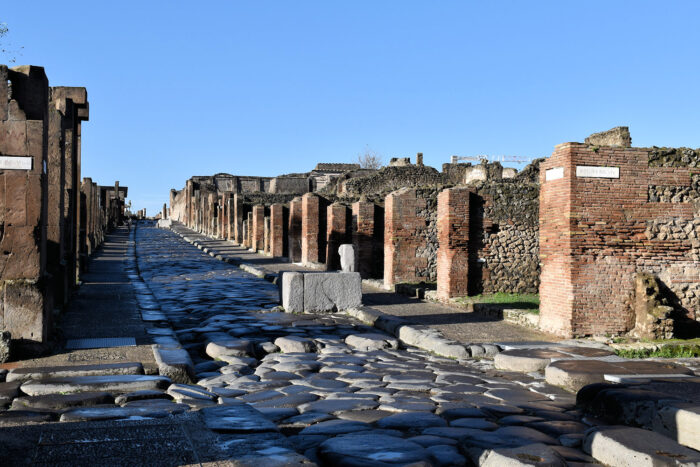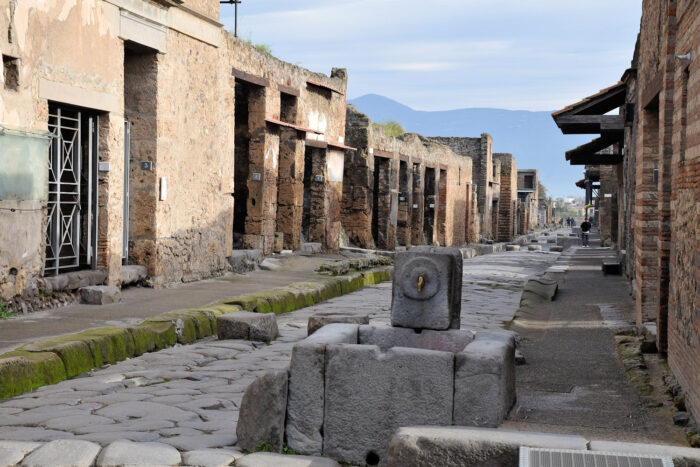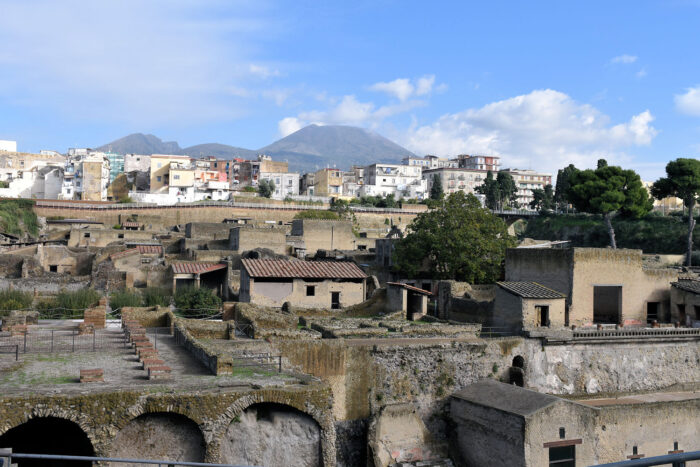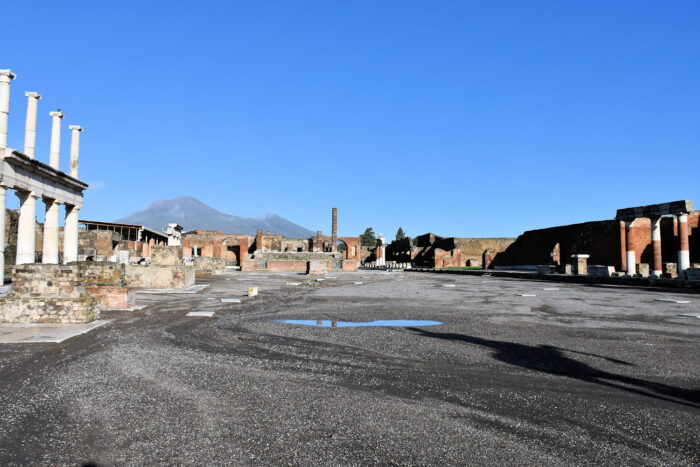Pompeii is a large site. It was home to about 20,000 people and I about 2/3 of that has been excavated. Not all of the excavated area is open to the public but the Park still covers a large part of the city. The website recommends a minimum of 2-3 hours to visit the site. Now I know it says minimum but that suggests you can get around most of the area in 2-3 hours. I had five days there. One was washed out and another I visited Herculaneum, although I dropped into Pompeii for the last couple of hours of the day. So, that was three days of 3-4 hours each, and I managed to get to everything I wanted to see but not the whole site. Big place. But it was a city, and like any city it was mostly houses and shops.
A typical street small shops along the sides, open to the street, and the houses are in behind.
There are also water fountains and stones for crossing the road (you can see some behind the fountain).
The kerbs are very deep in places, and stones help keep people out of the water when it rains.
Now, most of the shops are empty, so you can’t tell what they used to be, but a lot of them have counters.
This is a thermopolium, where where you could buy food, not unlike a modern takeaway. The holes in the counter have jars under them
This is another.
Bakeries are also easy to pick, with their millstones and ovens.
And this is a brothel. Can you see the pictures above the doors?
The pictures are either the “menu” or to help clients get in the right mood.
You can see the entrance to a house between two shops (with the metal bar).
The basic form of a house is a short passageway leading to an atrium, which has a fountain in the middle to collect water (through a hole in the roof)
and rooms around the edges. The rooms often have murals and frescos.
then a small passage/room leading to a peristyle (a walkway with columns, usually around a garden) with more rooms opening off that.
Then, dependng on the size of the house. there are other rooms off to side and rear.
The entrance to the House of the Faun. (The gate ismodern)
This one is a little more air-conditioned, but the same basic structure. There’s the atrium’s fountain (with the faun)and behind you can see the peristyle.
Floors were decorated with mosaics, which might be geometric patterns or pictures.

The back/side entrance for the House of Menander. The front entrance was between two shops.
The atrium, looking towards the entrance.
And peristyle.
Another house, looking fromm the street (looking over the atrium, with the peristyle in the background). Note the elaborate mosaic floor.
And this at the doorway. (Beware of the dog!)
Outside of the towns, villas were large country houses. Many of them have elaborate murals andfrexcoes, so to finish off, two rooms from the VIlla of the Mysteries.

























